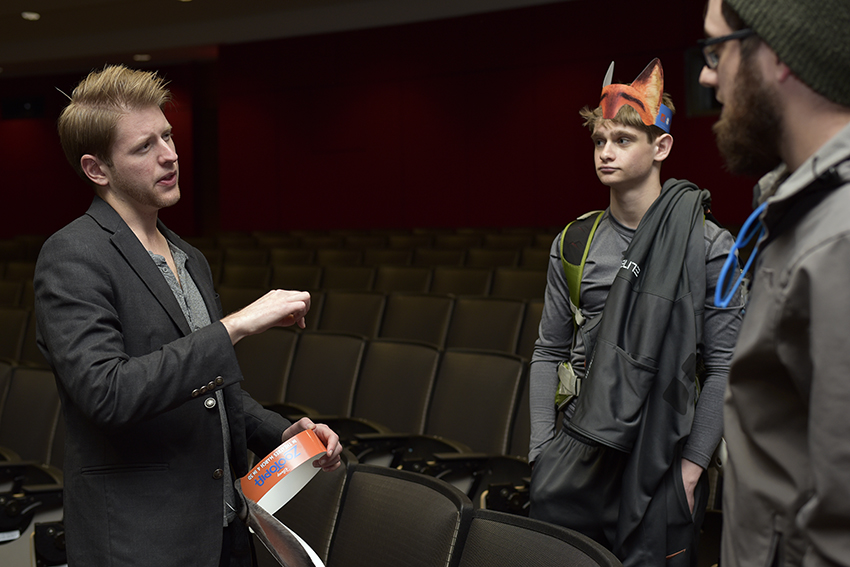In Disney’s latest animated feature, “Zootopia,” rookie rabbit cop Judy Hopps (Ginnifer Goodwin) doles out parking tickets on car after car. Though each ticket briefly appears onscreen before she pulls out another, each of their numbers and license plates are unique, thanks to the work of the film’s Environmental Look Supervisor, Lance Summers.
One of the many artists who helped “Zootopia” achieve its level of realism, Summers visited UT Tuesday to deliver an in-depth look at the production of the film, which comes out March 4.
Summers’ job was to translate the art department’s 2-D images into 3-D, supervising the texturing and shading of characters and environments. He started working at Walt Disney Animation at 20 years old after applying through the studio’s Talent Development Program, and his resume includes credits for “Tangled, “Wreck-It Ralph,” “Frozen” and “Big Hero 6.”
He and Disney’s top artists and animators crafted the titular city, Zootopia, a bustling metropolis populated by millions of lifelike, anthropomorphic mammals. The city contains zones that feature different biomes — including a desert, rainforest and tundra — each rendered with enormous attention to detail.
Summers said he recalled making sure the film’s environments had residues on windows and walls, so the world would feel less computer-generated. Fog, lighting, shadows and backgrounds rendered in 3-D also add depth and scale to the various locations. In shots with foliage, the plants noticeably sway. He said the more subtly complex the shots, the stronger their illusion of reality.
That same attention to detail was applied to the development of the characters. Whereas Mickey Mouse and the eccentric dog Goofy are the same size, the animals of “Zootopia” match the sizes of their real-life counterparts. Judy is dwarfed by elephants, and mice and shrews are so small they need to live in a miniature city. Summers said this was done to make the world more relatable.
“One thing John Lasseter [founder of Pixar and a creative officer at Walt Disney Animation] wants us to keep in mind is truth to reality,” Summers said. “You don’t want to stray too far off from what could be reality. It has to work. It has to feel like it could exist.”
To help make the animals realistic, Disney animators visited the San Diego Zoo and Kenya to conduct research and consult with scientists. Because mammals are more complex to animate because of their fur coats, Summers said the artists had to reference various aspects of 60 different species to nail their appearances in the film. Behavioral quirks for each species were also added into the picture, lending the characters and the world greater personality.
“There’s a scene [where an antelope crosses the street] and the rest start to follow, and they move as a little herd across the street,” Summers said. “You’ll see moments where [Judy] taps her foot like a real rabbit.” Though most viewers won’t pick up the little details, they all help make “Zootopia” a more
absorbing picture.
Unfortunately, because the film’s art was developed concurrently with the script, some story changes rendered certain locales unusable and caused weeks of labor to be scrapped. Summers estimates 40 percent of the developed content was ultimately cut.
While this may sound disappointing, cutting large portions of content is common for production of animated films. Summers said these hard decisions must be made in order to make the best film possible, and the studio does its best to account for that.
“That’s one thing about Disney — we’re so agile and nimble that we’re able to change on the fly,” Summers said. “We want the story to be able to make changes up until the end, and that’s what’s most important. We want it to be as solid as it can be.”















